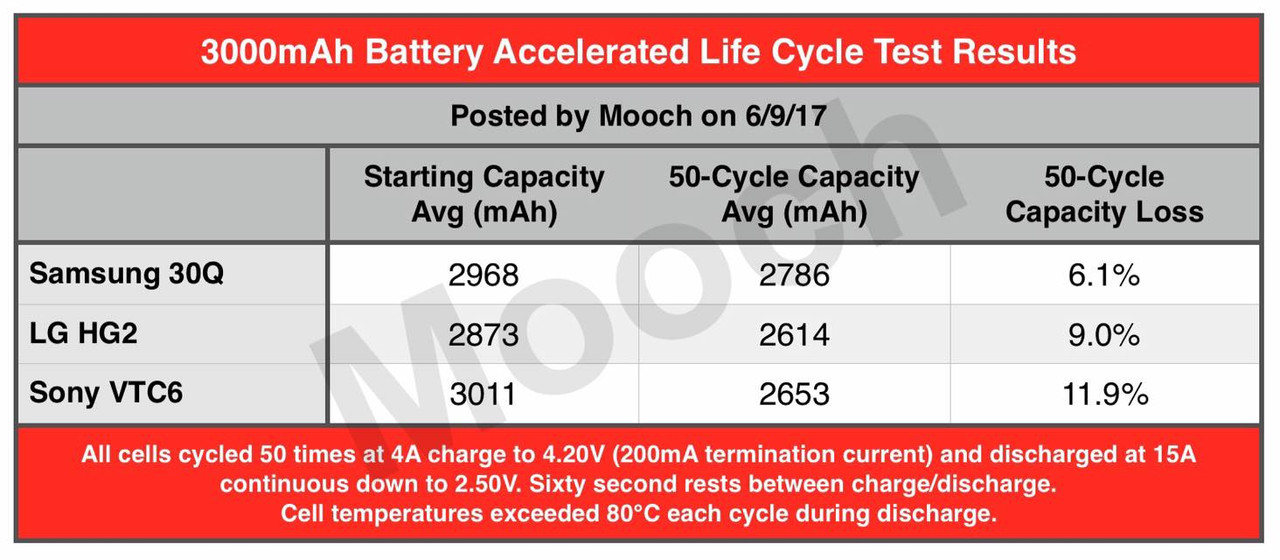For the sake of visitors and the newly informed:
The vast majority of flashlights in the world will see no visual increase in brightness (lux or lumens) using any of the hot rod batteries discussed here on candlepowerforums. I have, and regularly use, Sony VTC5, VTC5A, VTC6, VC7, along with the 18650GA. Also used are various protected and unprotected 18650, 26650, and others. Even using quad and triple emitter flashlights show nothing of particular significance as long as up-to-date, quality batteries are used. Since I do not, in practice, take batteries down much below 3.8V and almost never below 3.6 Volts, even the somewhat higher capacity batteries don't allow that much more runtime.
If a person has clean contacts between head and body and tailcap, a higher Amp switch, and hungry emitters, the tool is going to heat up fairly fast, with heat shedding depending on how well the flashlight components are made to release the heat. The LED's will start to reduce output because of heat and voltage sag. Still, the different kinds of good quality batteries will not display any particular difference in performance to the eye in actual use.
One of my quads from PFlexPRO will run about 14A through a thick copper piece placed between the flashlight body and the negative side of a quality high Amp battery, but the piece of copper gets hot fairly quickly. The Emisar D4Ti heats up so fast, the idea that some particular battery must be used is human folly. The thermal protection kicks in so fast (30 seconds?) the difference in performance is insignificant. I have ordered an Emisar D4 and expect similar results. The Emisar D1S is a fine tool and I see no difference with the different quality batteries.
Now some big flashlights and the hot rod vaping devices are different in that they need higher sustained Amperage, and in the case of some torches, will not be able to shine as bright, at least for the first minute or so, with lesser performing batteries.
This post is directed to practical users, and some enthusiasts might get angry with it. Any correction or additional factors are certainly welcome from members. But anyone wanting to jump in with comments like; more efficient, increased output, higher performing, etc. needs to quantify their statements. When the actual numbers come out, it is obvious that the differences are essentially very close to being, (or completely) not detectable in real life use.



